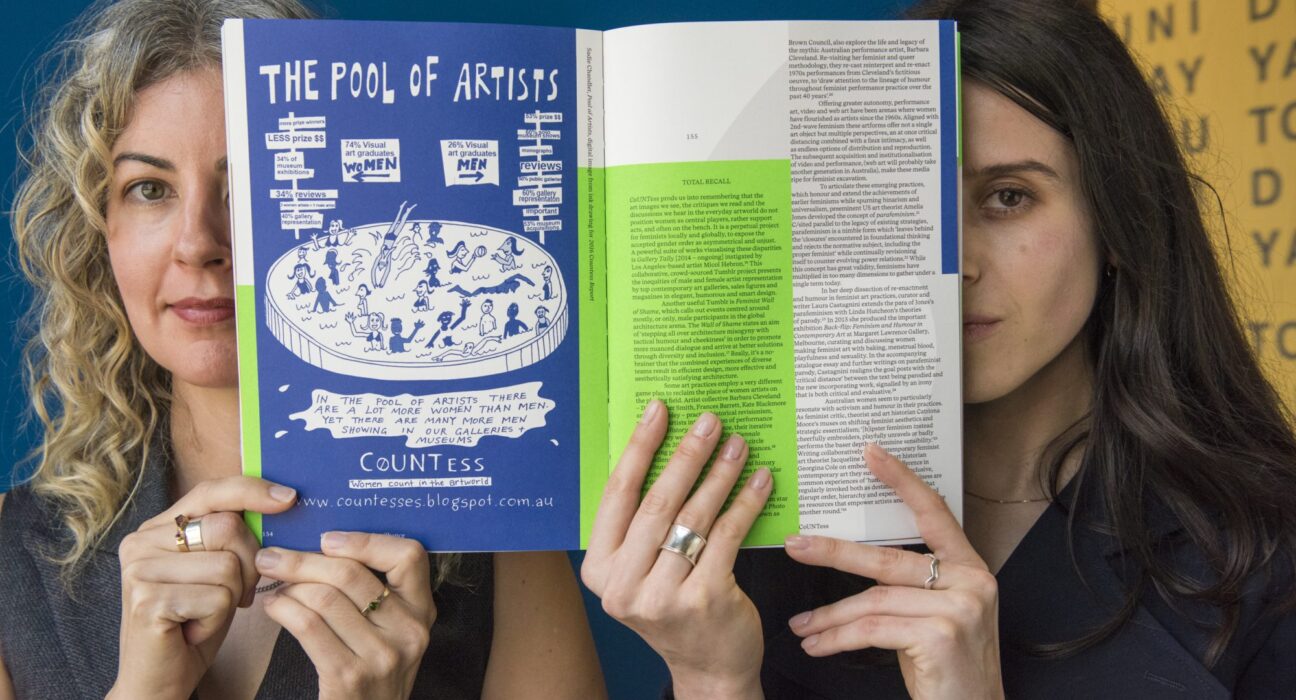The latest findings from the Countess Report on gender equity in the visual arts present a sobering picture of the state of representation and inclusion, urging immediate action from both the galleries and governments. Despite some minor improvements in certain areas, overall progress appears to have stalled since the last report.
Countess’ tally of approximately 21,000 artists across more than 450 institutions – a significantly larger sample size than the 2019 report – sheds light on the disparities in representation. Co-authors Shevaun Wright and Miranda Samuels also conducted the first national count of Aboriginal and Torres Strait Islander gender representation across the gallery sector. The inclusion of this data marks a notable step forward, providing a baseline for future analysis and advocacy.
Particularly concerning is the persistent under-representation of female artists in state galleries, where they account for only 28% of solo exhibitions and 39% in state gallery group exhibitions. Major museums, aside from the Museum of Contemporary Art (MCA), performed even worse, with women artists comprising 31% of represented artists. This inequity extends to acquisitions, with state galleries acquiring more works by male artists than female artists, both among Aboriginal and Torres Strait Islander and non-Indigenous artists.
The report finds that men continue to dominate commercial gallery representation, showing persistent gender disparities in the commercial sector. Interestingly, however, the opposite trend emerges among First Nations artists, where women significantly outnumber men.
While female Aboriginal and Torres Strait Islander artists generally achieved gender parity in exhibition programs, significant gaps remain in their representation across Contemporary Art Organisations Australia (CAOA), commercial galleries and public galleries. These findings demonstrate the urgent need for targeted interventions to address the intersectional challenges faced by First Nations women artists, exacerbated by the absence of First Nations peoples among staff and Boards of directors across the sector. Policy change and investment is urgently needed to address the glaring gap in career pathways for First Nations arts workers and leadership roles within the visual arts.
On a positive note, the report highlights an increase in the representation of non-binary identified artists across all categories since the last report. However, challenges persist in accurately capturing gender data, as many artists choose not to identify publicly.
The report also highlights the limitations of how the Cultural Gifts Program (CGP) is implemented within certain state-based collection policies. Inconsistency in valuation requirements can be cumbersome, while antiquated policies mean that CGP gifts are often drawn from long-established collections, where women artists may be less represented, or donations are restricted to artists already represented in the collection. All of this perpetuates historical biases and reinforces entrenched power dynamics. Despite these challenges, NAVA (National Association for the Visual Arts) is aware that there is a growing willingness within the sector to improve practices and strengthen both gender parity and representation of First Nations practitioners across exhibitions and collections.
It is worth noting that much of the programming introduced in 2022 was likely originally scheduled for 2020 or 2021, but faced delays or postponements due to the COVID-19 pandemic. The 2019 Countess Report highlighted that state galleries and major museums often plan years ahead, which may explain the slow progress in addressing gender equity in exhibition programming since the previous report. However, current exhibitions featuring First Nations women artists may signal the beginnings of change following the 2019 Countess Report.
Three major solo exhibitions by Indigenous women are currently showcased in Yhonnie Scarce: The Light of Day at the Art Gallery of Western Australia (AGWA), Judy Watson: mudunama kundana wandaraba jarribirri at Queensland Art Gallery I Gallery of Modern Art (QAGOMA), and the major survey of Emily Kam Kngwarray, which recently closed at the National Gallery of Australia (NGA).
The latest Countess Report highlights the urgency of implementing long-overdue reforms. The slow progress in addressing gender equity in the visual arts emphasises the need for proactive measures to dismantle systemic barriers, and promote diversity and inclusivity.
Read: CoUNTess – spoiling illusions about the arts since 2008
NAVA asserts the critical importance of governmental and institutional policy change to effectively address these disparities. Without meaningful reforms at all levels, progress towards gender equity in the visual arts will continue to lag.
Image: Shevaun Wright and Miranda Samuels holding a copy of CoUNTess: Spoiling
Illusions Since 2008 by Elvis Richardson and Melinda Rackham, picturing ‘Pool of Artists’
illustration by Sadie Chandler. In the background is artist r e a’s ‘GARI (language)’, 2024, for
the 24th Biennale of Sydney, ‘Ten Thousand Suns’, 2024, Artspace. ‘GARI (language) was
commissioned by Biennale of Sydney and Artspace, in collaboration with r e a to create a
safe space for reflection. The Banner Series and Ideas Platform is supported by Andrew
Cameron AM and Cathy Cameron. Photograph by Jamie James.

